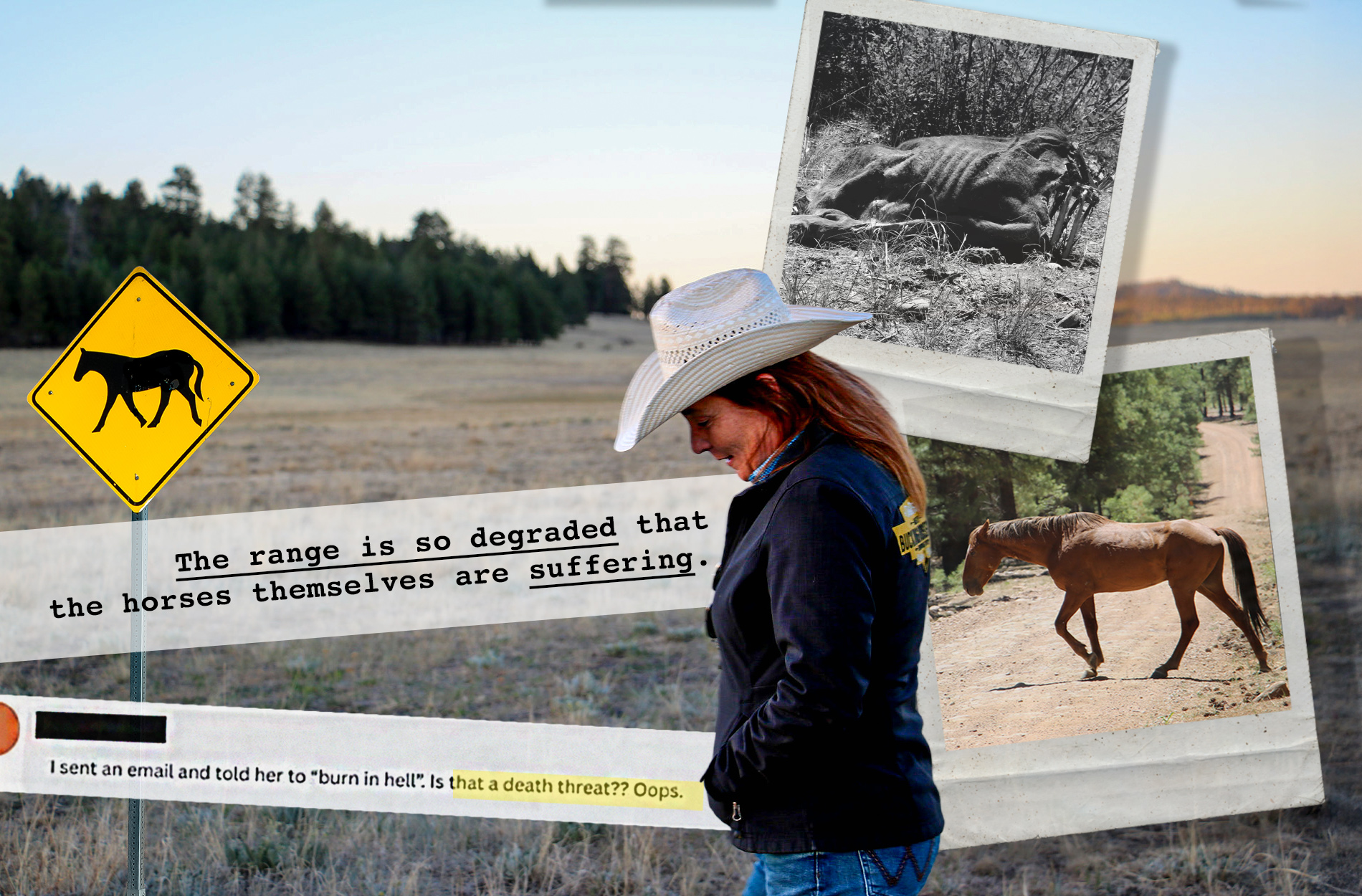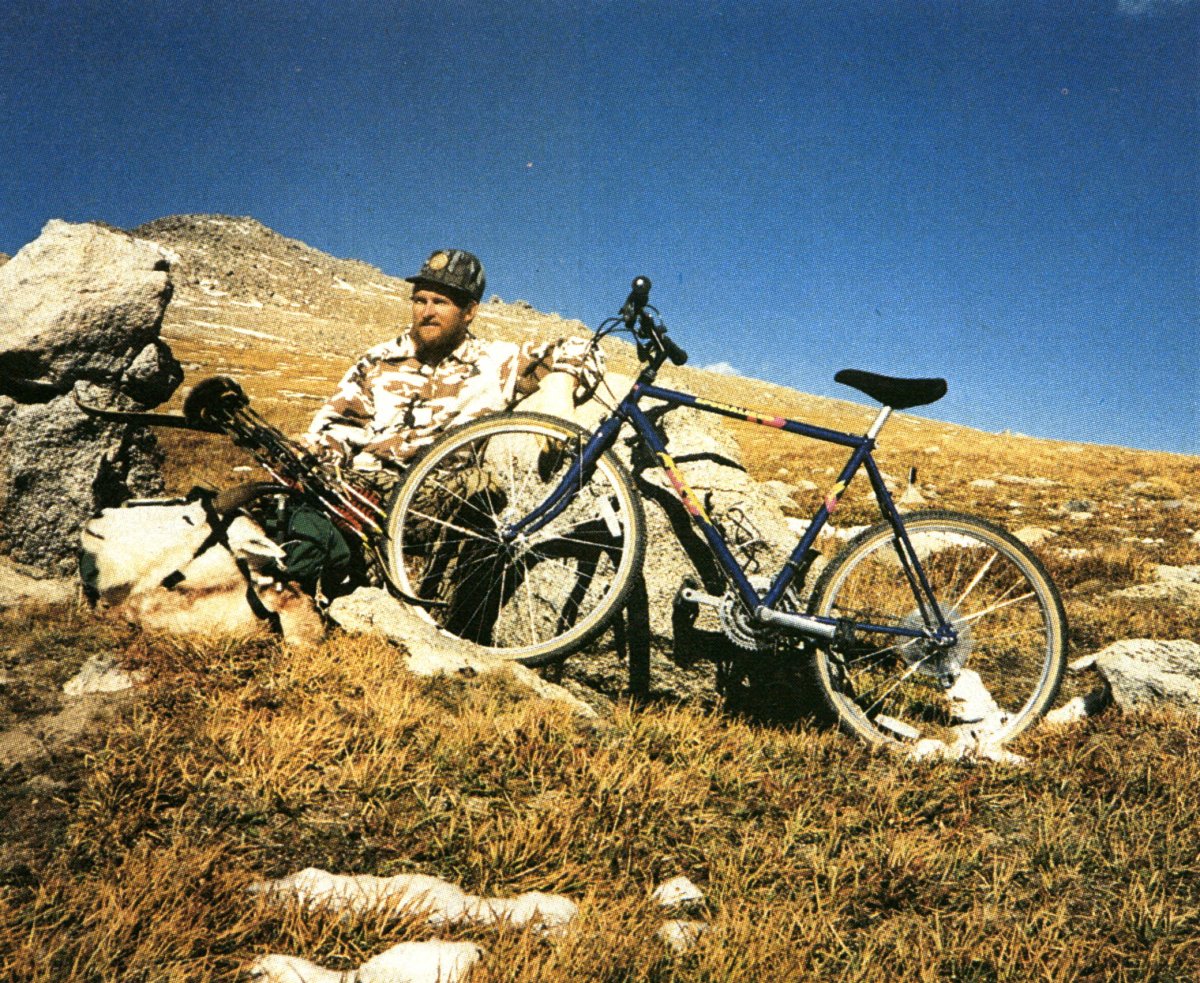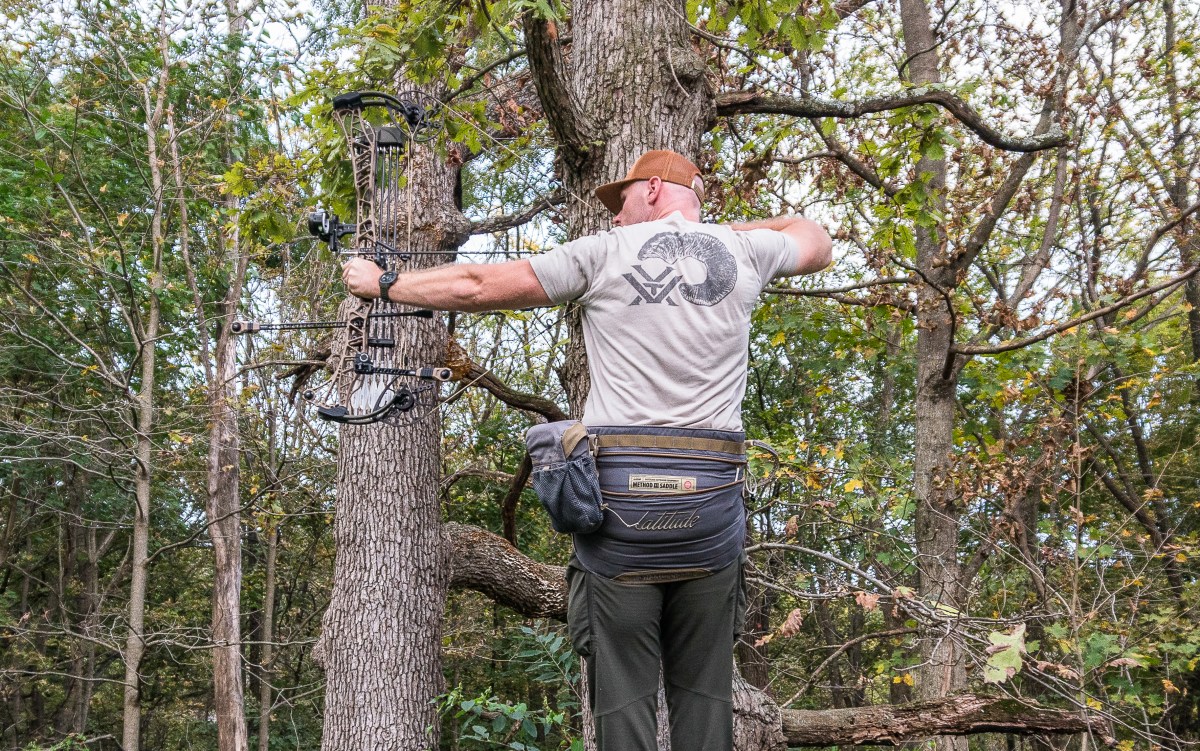This Cowgirl Is Solving Our Wild Horse Problem. Activists Want Her Dead

It was already snowing in the White Mountains when Jackie Hughes got a call from one of her cowboys last December. They’d caught five horses in a bait trap on the Apache Forest near Big Lake, but the snow was piling up quickly and they were worried about their trailer getting stuck.
“I said, ‘Just get the horses and get off that mountain,’” Hughes recalls. “Well, they got the horses into holding, but the next morning they went up to check the trap, and there were tire marks. Someone had stolen it.”
All this time later, Hughes can’t say for sure who stole their trap. (The corral panels they use to form the bait traps are made of six-rail, heavy-duty steel, and moving those 10-by-10-foot panels would have required a team.) She has an inkling, though. It wouldn’t be the first time that Hughes and her cowboys have been sabotaged by wild-horse advocates on the Apache-Sitgreaves National Forest complex.
Together, the two forests (also called the “A-bar-S”) cover around 2 million acres in eastern Arizona. And during the four years Hughes has worked the Apache side, gathering free-ranging horses on a government contract, horse advocates have harassed and threatened Hughes, her employees, and even her family.
“I’ve had other traps where we’ve pulled up, and there’s nails and screws all over the place,” says Hughes, the owner of Rail Lazy H. “So many that I had one truck and trailer [where] all the tires on the passenger side blew out. That rig almost went off the mountain.”
This controversy isn’t isolated to Arizona. It’s simply a snapshot of the larger debate around horse management in the U.S. — a source of countless disagreements and lawsuits that have impeded the removals of public-land horses and burros that are required under federal law. (These animals aren’t killed; they’re required by law to be treated humanely, and are taken to auctions or put up for adoption.)
The same thing is happening in other Western states, to the extent that wild horse and burro populations are nearly three times what is considered appropriate for Western rangelands to support. Federal land managers use the term “appropriate” because unchecked horse herds harm the environment; they contribute to erosion, hog water, and outcompete native wildlife species for forage.
The population problem doesn’t end there, either. Most of the public-land horses and burros that do get legally removed end up in federal holding facilities, which are now overcrowded because the government can’t give the animals away fast enough. Up until this March, the government was actually paying people to take horses off its hands.
While this debate rages on across the West, and as the range suffers and the government’s feed bill climbs, Hughes and her crew of cowboys carry on.
A Meadow Alive
When I first met Hughes, who stands all of 5 foot 3 inches if you include the crown of her Stetson, I wasn’t entirely sure why she does such thankless work. Or as she puts it, how she continues “withstanding the storm that she creates.”
In addition to being sabotaged on the job, Hughes has also been sued and slandered by groups of horse advocates, and a few individuals in particular. These activists have disrupted public auctions — to the point where she no longer holds in-person auctions — and they’ve filled her inbox with vitriol and even death threats. She’s been called “evil,” “scum,” and far worse four-letter words.
“May you suffer at the hands of the souls you’ve murdered,” reads one email Hughes received in 2023. In another, an activist said they were praying sincerely for Hughes to be “taken down” and that she should “make a note of that somewhere in [her] evil heart.”
Then I went out with Hughes to a meadow near Big Lake at sunset — the same area where her crew has removed 650 horses in four years, and lost a trap and some tires in the process. As the sun dipped behind the evergreens, we watched more than a hundred elk pour out of the timber and into the clearing. Hughes explained that before their last removal six months prior, the meadow was cropped down to the dirt and devoid of elk and deer.
She’s seen the same kind of recovery on other parts of the Apache, including an area she calls the Mouse Trap. The spot is so named because it’s one of the only places on the two forests where the endangered New Mexico meadow jumping mouse can be found.
In 2020, around 13 years after horse advocates first sued the Forest Service over its initial plans to remove free-ranging horses from the Apache-Sitgreaves, the Center for Biological Diversity filed a lawsuit against the agency for failing to remove horses quickly enough. The CBD argued in its suit that the endangered mouse was at risk of going extinct there due to the impacts from horses.
“It was this whole on-the-ground assessment … The Fish and Wildlife Service came,” Hughes says. “And when I drove in there and looked at the Mouse Trap, there were 50 horses standing in it. There wasn’t one blade of grass, and you could see where they had knocked down part of the [elk] enclosure to get at the grass, because they had absolutely denuded and moonscaped the area.”
Hughes says when USFWS officials took a closer look at the Mouse Trap, they came across a dead mouse fitted with a tiny GPS collar. It had been flattened by horse hooves.
After a settlement agreement in 2022, Hughes and her crew started removals at the Mouse Trap, capturing more than 130 horses there in the first six weeks. Additional lawsuits filed by advocate groups kept them from finishing the job until 2024.
“And last fall, when I drove out to the Mouse Trap to take a look, there wasn’t one sign of a horse anywhere. The grass was over a foot tall, and we’d had rain, so it was green,” Hughes says. “You could hear birds again. You could hear crickets and bugs and squirrels and chipmunks … I can’t explain to you how profound it was, just to sit down in that grass.”
Out of the Frying Pan, Into the Fire
When you drive up Highway 206 from Phoenix and into the pine forests around Heber, which serves as the gateway to the A-bar-S, you’ll notice two obvious changes. First, it’s much cooler than the frying pan that is the Sonoran Desert. And second, the road is lined with horse crossing signs — the same yellow, diamond-shaped panels that warn drivers of deer on other roads.
These signs might appear out of place until you turn off the highway, where any day of the week, you can drive a few miles down a dirt road and count dozens (if not hundreds) of free-ranging horses. For some people in the Heber area, and some of the tourists that flock here each summer, these bands of roaming horses are a local treasure and a piece of Western history.
The 19,700-acre Heber Wild Horse Territory was established in 1974, three years after Congress passed the Wild Horse and Burro Act, which required federal land managers to inventory their free-ranging herds. The U.S. Forest Service counted seven horses on the Sitgreaves near Heber that year, and it remains the only designated horse territory on national forest land in Arizona. That band, however, had died off by the early 1990s, according to the USFS, and they “zeroed out” the territory in 1994. In other words, there were no horses roaming the area.
This was, coincidentally, around the same time that John Koleszar started bowhunting elk and deer on the A-bar-S. A member of the Arizona Outdoor Hall of Fame and the president of Conservation First USA, Koleszar got heavily involved in wildlife conservation as he learned the units around Heber. He killed his first bull in Unit 3C in 2004, and a second in 2005, but by then, things had changed in the forest.
Two years prior, in 2002, the Rodeo-Chediski Fire — at the time, the state’s largest-ever wildfire — ripped through the national forests and down into the neighboring tribal lands of the White Mountain Apache, taking out miles of fenceline along the way. The fences stayed down for years, allowing horses that were on the reservation to move freely between the two areas. And as forest managers started aerial re-seeding, even more animals were drawn in by all the fresh browse that sprung up.
“That burn area was a magnet,” says Paul Greer, a field supervisor for the Arizona Game and Fish Department who works on the Apache-Sitgreaves. Greer says they saw a significant increase in turkey, elk, and deer numbers in the few years after the R-C fire. “It was also very attractive to horses for the same obvious reasons.”
Koleszar, who hadn’t seen a single horse in either forest until 2003, noticed this as well. By 2005, he and other hunters were seeing so many horses in the forest that they brought their concerns to the USFS. The agency announced its plans to gather those horses — and was promptly sued in court. In 2007, a judge ruled that the Forest Service could remove horses there, but only after it established a new management plan for the Heber Horse Territory.
When I visited the A-bar-S this June — roughly 18 years later — the USFS had yet to formalize a plan. The closest the agency had come was an unsigned draft plan that was recommended by a Heber Horse Working Group in 2019, and which called for an appropriate management level of 50 to 104 horses within the roughly 20,000-acre territory.
Meanwhile, the number of free-ranging horses on the Apache-Sitgreaves has continued to grow, to the point where land managers have all but lost count. Greer says there are so many horses now that trying to count them would interfere with their wildlife surveys. But to give a very rough idea: In just one day on the Sitgreaves, I counted 175 horses, along with three squirrels, one jackrabbit, and a lone cow elk.
“The problem has been, and always will be, that the federal agencies in charge of maintaining and taking care of their lands didn’t do their job. Nothing got done, nothing was handled, and consequently, the whole forest has become a horse territory,” says Koleszar, who no longer hunts the area due to the impact from the horses. “It’s this single-species adulation — that’s my grief with the horse advocates. Because the general public just does not understand how bad this habitat has been damaged. They don’t see it as a problem. They just see these beautiful animals, and that’s all they care about.”
At the root of this fundamental disagreement is the loaded word “wild,” which the public uses almost universally when referring to the bands of horses living on public land. Hughes prefers the term “feral,” while advocates will argue that these animals are wild. And it is true that during the hundreds of years since they were brought over from Europe, horses have adapted to thrive in some of the West’s wildest country.
But is a horse that was born in the wild and lives in the wild just as “wild” as a mule deer or a black bear? And if so, should we manage them the same way we do deer and bears?
These are semantics that some will never agree on, since everyone values different species for different reasons. But if we are talking objectively about sharing a multiple-use landscape, we should start by taking a good, hard look at the land itself.
Viewers, Vigilantes, and the Science in Between
Between scouting, hunting, and searching for sheds, Koleszar couldn’t tell you how many thousands of hours he’s spent on the national forests around Heber. But Betty Nixon can.
“I’ve spent 12,000 hours photographing and documenting these horses,” says Nixon, a horse advocate who moved from Kansas City to Heber in 2018 and became captivated by the horses there. “I know their stories.”
Nixon has been a vocal defender of these free-roaming bands since 2022, when she and the Heber horses were thrown into the national spotlight due to a series of illegal horse killings on the Apache-Sitgreaves. In an interview with Time, Nixon explained that between fall 2018 and the end of 2021, she came across 40 different horses that had been shot and killed on USFS land. Although the agency is still investigating the crimes, nobody has ever been arrested or charged for the shootings.
I was reminded of the mysterious killings in June, when Nixon and I came across a horse carcass on the Sitgreaves. It lay just off a forest road, where it looked to have died from natural causes — and not a bullet — but Nixon took photographs anyway. She said she’d be reporting the carcass to the USFS, which would have to perform a necropsy at some point.
“There’s just this overwhelming hatred for these horses,” Nixon said after we got back inside her truck. “I call it wild horse derangement syndrome.”
Nixon says she personally doesn’t want to see any horses removed, at least not from the Sitgreaves Forest. She also doesn’t believe that they need to be managed because, she says, the USFS hasn’t provided sufficient evidence to show that horses are actually damaging the range. She claims that during the 12,000 hours she’s spent filming and documenting the Heber horses, she’s never once seen a horse compete with a wild animal for resources — something Koleszar says he sees every fall.
“They won’t leave water, particularly if it’s really dry out,” says Koleszar, who along with his buddies, started carrying a slingshot when he hunts near water to keep territorial horses away from him. “They will drive off elk, they will drive off deer, and I’ve seen them drive off turkeys — anything that comes into water that is not a horse and not part of their band.”
Peer-reviewed research backs up Koleszar’s observations. Researchers have seen that wild horses and burros will hog water tanks, streams, and other water sources — often to the detriment of native critters like deer and antelope, which are easily bullied by a big stallion. One study, which focused on horses and desert bighorn sheep in California, found that the wild sheep would consistently avoid a stretch of creek if a single free-ranging horse was present — even if that horse was just standing near the creek, and not actively drinking. As researchers moved that horse to different stretches of creek, the bighorn would continue to adjust where they came to water.
During the five days I spent on the A-bar-S, I must have seen between 15 and 20 dirt tanks — old water catchments built by ranchers that are used by wildlife, and now horses. All but one of those tanks was dry and pock-marked with telltale hoof prints.
Horses are inefficient grazers as well, so they require significantly more food than native critters. (A horse will eat around twice as much forage per day as an elk does, for example.) Elk, deer, and other wildlife also have a natural physiological response to drought and diminished resources that triggers them to reproduce less. Horses — selectively bred by humans over millennia — lack this response and will just keep pumping out foals. Which means a free-ranging horse herd will grow at a rate of around 18 to 25 percent every year, even during a long-term drought like the one Arizona is experiencing.
“The range is being degraded, and in many places it’s so degraded that the horses themselves are suffering.”
“There are female horses [out there] that are just skin and bones, and they’re still reproducing,” says AZGFD Research Branch Chief Esther Rubin, who has studied free-ranging equids all across the West. “The data backs up these reproductive rates from monitoring populations in the wild, and we’re not making any headway right now. The range is being degraded, and in many places it’s so degraded that the horses themselves are suffering.”
Stalled on the Management Front
Amid the ongoing reshuffling of federal agencies, the forest supervisor for the Apache-Sitgreaves, Rob Lever, took an early retirement in late June and was replaced by acting forest supervisor Josh Miller. At that time, the draft management plan for the Heber Horse Territory was still awaiting a supervisor’s signature.
Listen Next: Meet the Cowboys Caught in the Middle of the West’s Wild Horse Problem
Although Koleszar says he thinks a finalized plan is imminent, the current plan remains unsigned, according to Miller. He and other officials turned down requests for interviews by OL, and the agency has not made any public statements regarding the Heber Horse Management Plan.
If and when the management plan does get signed, there is likely to be opposition during the public comment period. But if it survives public scrutiny and makes it to the implementation phase, Hughes and her cowboys will be there to do the work. And you can bet they’ll be camping on their traps.
“There’s always going to be conflicts … and some people don’t like this when I say it, but horses will continue to have to be removed under [a workable] management plan,” says Hughes, who has also adopted and helped train several of the horses that they removed from the Apache Forest. Some of those animals are now on a string at a dude ranch, where they’re taking first-time riders out on the trails.
“You know, I get [this idea of] letting them run wild and free. I get the sanctuaries,” Hughes says. “But not all horses need that. Some of them turn into really good horses.”
Read the full article here









